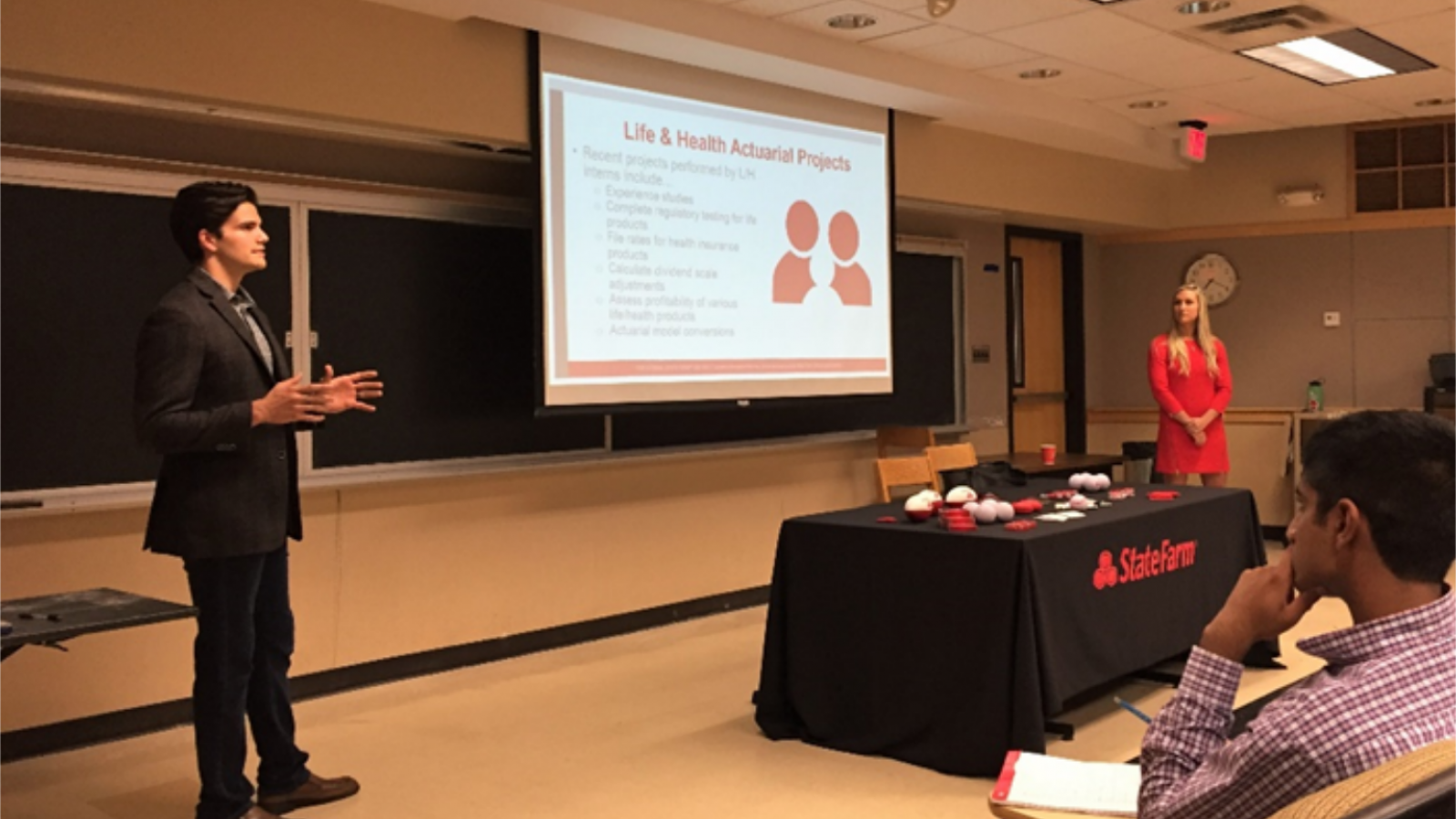
Founded in 1979, Ohio State's undergraduate actuarial science program will have its 40th anniversary next year. Over almost 40 years of time, the program has produced hundreds of actuaries for insurance and actuarial consulting business. It has grown from a small program into a nationally recognized program with more than 360 students, making it one of the largest and the best actuarial programs in the country.

The goals of the actuarial curriculum are twofold: (1) to supply a strong general background in mathematics, statistics and relevant concepts from actuarial science and business, and (2) to prepare students for the national actuarial examinations administered by the Society of Actuaries and the Casualty Actuarial Society.

The program covers core actuarial disciplines through courses in probability and statistics, interest theory, financial economics, life contingencies and loss models. The program also exposes students to real business through a course in actuarial practicum, as well as many professional information sessions and seminars. Each spring, actuaries and business leaders from about 10 companies come to visit the practicum class. They give lectures or conduct class projects on topics from real practice. Each autumn, representatives from 15 to 20 companies come to the department to meet students and hold information sessions and professional seminars. The practicum class and information sessions have greatly helped students in understanding the actuarial profession and in obtaining practical knowledge. The curriculum has prepared students well, and the actuarial exam passing rate among students continues to improve. In recent years, an average of more than 80 percent of graduating seniors pass at least one exam, and about 75 percent pass two or more exams.

With the creation of a master’s degree in actuarial and quantitative risk management (MAQRM) in 2016, the program has been developing new courses, with some of the beginning graduate courses made available to upper-level undergraduate students. Among these are courses that cover topics in predictive modeling and quantitative risk management. The predictive modeling course covers basic methods from machine learning and the mathematical ideas behind these methods. The risk management course exposes students to real practice in handling risks in the financial market. Both courses help students to see the changing landscape of traditional actuarial practice.
